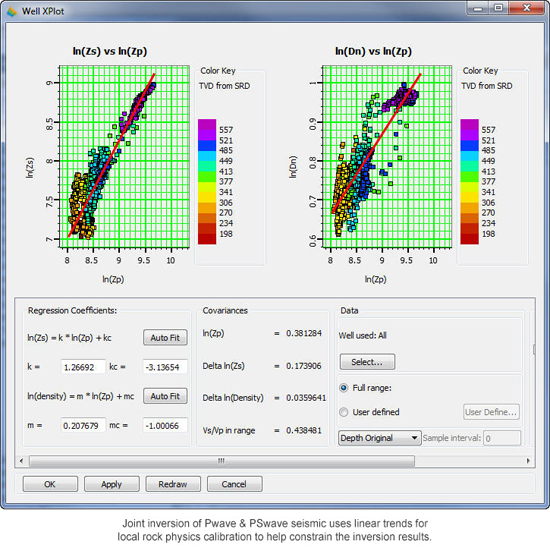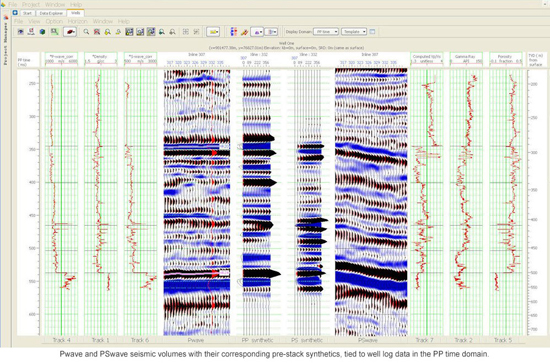PROMC
ProMC allows consistent interpretation of multicomponent data. It addresses the challenges of differences in event times, frequencies and reflectivity between PP and PS seismic volumes. The easy-to-use and intuitive work environment offers interpreters the ability to handle the increased number of seismic and attribute volumes inherent in a multicomponent project.
Multicomponent Seismic Interpretation
Benefits of ProMC include:
- Reliable PP and PS time and depth domain conversion and integration
- Unique set of functions to correlate each component of the seismic data to existing well control and identification of key geologic markers
- Consistency of PP and PS times and amplitudes during the joint PP-PS inversion
Modeling
To accurately interpret PP and PS data, it is important to model the effects of lithology and fluid changes on log responses, and to compute synthetic seismic responses.
Interpretation and Attribute Extraction
Multicomponent interpretation involves identifying key geologic markers on the PP wave and PS wave datasets. ProMC provides a unique set of functions to correlate each component of the seismic data to existing well control. During this event correlation process, ProMC creates a 3D model of the Vp/Vs velocity ratio.
Joint PP-PS Inversion
ProMC simultaneously inverts the PP and PS data to determine estimates of the P and S impedances, and optionally the density. The joint Inversion algorithm in ProMC includes a coupling between these variables, thus adding an extra constraint to improve the confidence in the resulting impedance and Vp/Vs volumes, as well as in subsequent fluid interpretation and lithology classification.
The added information obtained from the consistent interpretation of poststack multicomponent data has proven of critical importance in areas where conventional P-wave techniques are less effective, such as gas shadows, fractured carbonates and heavy oils.























